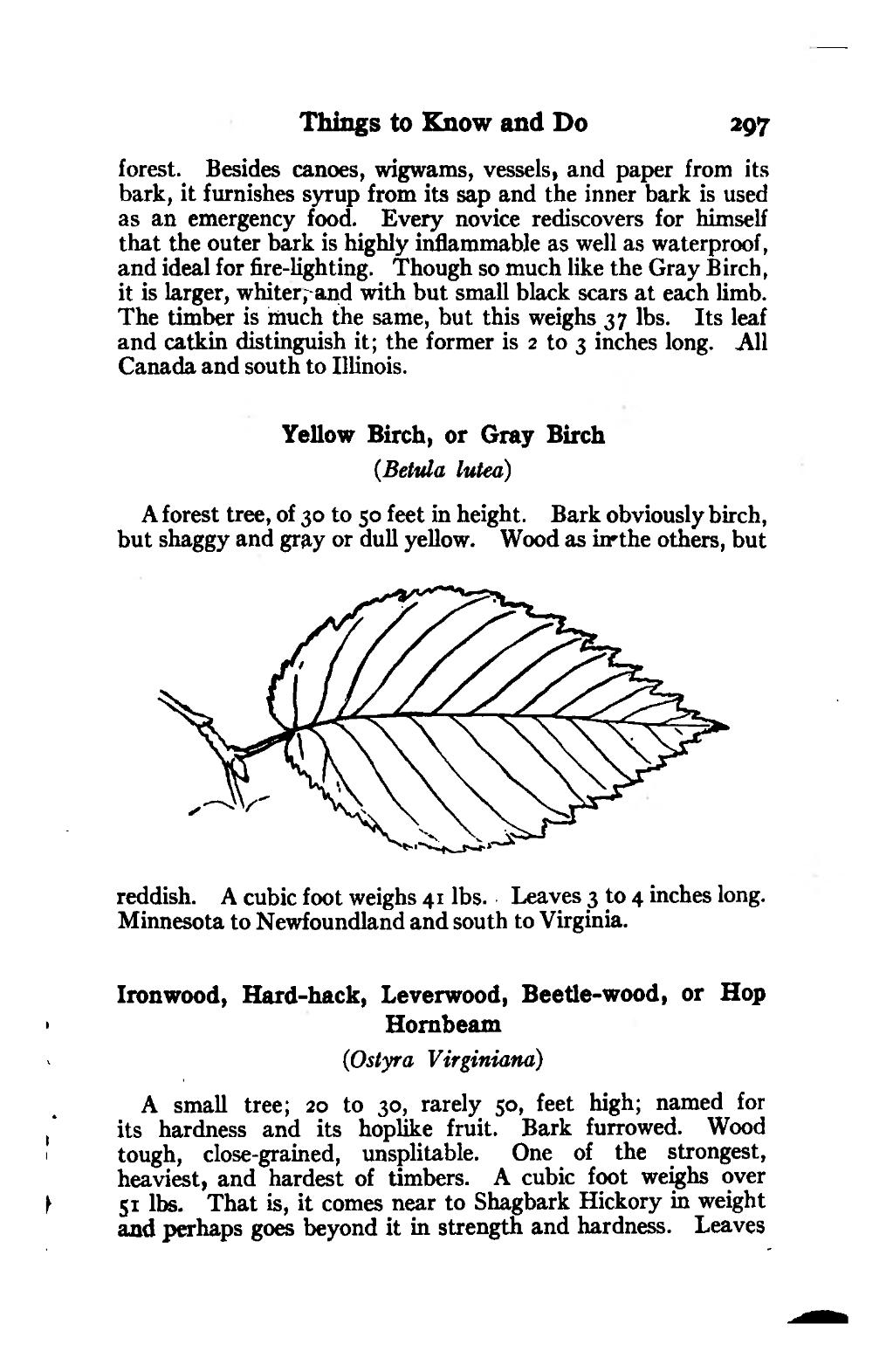Things to Know and Do 297 forest. Besides canoes, wigwams, vessels, and paper from its bark, it furnishes syrup from its sap and the inner bark is used as an emergency food. Every novice rediscovers for himself that the outer bark is highly inflammable as well as waterproof, and ideal for fire-lighting. Though so much like the Gray Birch, it is larger, whiter; and with but small black scars at each Umb. The timber is itiiuch the same, but this weighs 37 lbs. Its leaf and catkin distinguish it; the former is 2 to 3 inches long. All Canada and south to Illinois. Yellow Birch, or Gray Birch {Betida luted) A forest tree, of 30 to 50 feet in height. Bark obviously birch, but shaggy and gr^y or dull yellow. Wood as in»the others, but reddish. A cubic foot weighs 41 lbs. Leaves 3 to 4 inches long. Minnesota to Newfoundland and south to Virginia. Iron wood. Hard-hack, Leverwood, Beetle-wood, or Hop Hornbeam {Ostyra Virginiana) A small tree; 20 to 30, rarely 50, feet high; named for its hardness and its hoplike fruit. Bark furrowed. Wood tough, close-grained, unsplitable. One of the strongest, heaviest, and hardest of timbers. A cubic foot we^hs over 51 lbs. That is, it comes near to Shagbark Hickory in weight and perhaps goes beyond it in strength and hardness. Leaves
Stránka:roll 1917.djvu/329
Z thewoodcraft.org
Tato stránka nebyla zkontrolována
